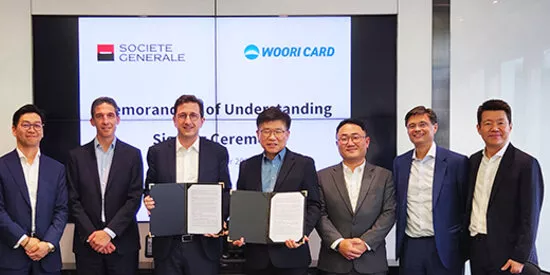
Opportunities in Asian debt capital markets are hiding in plain sight
By Raj Malhotra, Head of Debt Capital Markets for Asia Pacific and Ciprian Ile, Head of Capital Markets Syndicate for Asia Pacific at Societe Generale
International connectivity and a nimble approach to debt financing helps issuers and investors access the right opportunities at the right time.
Bond markets everywhere have been through a tough time in the past two years, rocked by volatile interest rates and persistent inflation. In Asia, the troubles in China’s property sector have added a further challenge, leading to a stark decline in public issuance of US dollar bonds.
International bond issuance in Asia reached US$ 380bn in 2023, according to ICMA, well below the US$620bn seen in 2021 before US interest rates began moving higher.1
Numbers like these tell only part of the story. While a new paradigm for interest rates is a challenge for both issuers and investors, Asian debt markets continue to present pockets of opportunity, against a positive long-term backdrop.
Recently, several international bond issues from Asia Pacific have attracted huge oversubscriptions, underlining how much money is available for deals that hit investors’ pricing expectations. For example, in May 2024, Korea Expressway Corporation’s US$500m 3-year notes garnered an orderbook of over US$2.5bn, while Commonwealth Bank of Australia’s debut EUR1bn Green Tier 2 notes saw a peak orderbook north of EUR4bn.
Furthermore, we calculate that almost US$400bn of international (USD & EUR) bonds are maturing in Asia Pacific each year in 2024-26, which will only add to the amount of cash that investors are looking to put to work.
Despite the challenges of the past couple of years, Asia’s debt capital markets remain as vibrant and diverse as ever. With a nimble approach to currencies and markets, issuers and investors can connect with a range of opportunities.
Connecting APAC with Europe
After a period of rapid increases to US interest rates, we have seen Asian issuers look to alternative currencies to reduce their reliance on fixed-rate US dollar debt.
In that context, the Euro market deserves a closer look. European investors are also searching for diversification, and have been enthusiastic buyers of new issues from Asia Pacific. We have helped three Australian corporate clients access this market in recent months, raising a combined EUR3.4bn. Toyota Finance Australia, NBN Co and Sydney Airport all drew a strong response from investors, with books 3-6 times oversubscribed.
Singapore’s Temasek Holdings also turned to the euro market in 2023, underscoring its appeal.2
The euro bond market provides robust demand, duration and competitive pricing for international issuers with a strong story to tell.
This can allow issuers from Asia Pacific to access specific opportunities, such as covered bonds or non-standard maturities – of six or eight years, for instance. When combined with the use of interest rate swaps, this can translate to a lower cost of funding compared to their domestic markets. Sterling can also be an interesting access point for APAC issuers.
Strong European appetite for ESG issuance is also an important consideration for Asian borrowers, especially in energy-related and finance sectors.
Beyond the public markets
Asia’s debt markets are also rich with opportunities for international investors. While the supply of new US dollar issuance in the public markets has declined, the private placement market in Asia Pacific has become more active. We continue to see very healthy flows in private offerings, with close to US$100bn of issuance in 2023 involving APAC issuers or investors, according to our calculations.
Societe Generale’s close relationships with international investors and knowledge of Asia’s local markets allows us to connect institutions with these opportunities. Popular alternative currencies include Hong Kong dollars, Australian dollars, Japanese Yen and offshore renminbi (CNH).
We are also seeing renewed liquidity in the Taiwanese Formosa bond market. Societe Generale itself has been a regular issuer in Taiwan, and our teams on the ground were quick to spot the trend and helped to reopen the market with a US$300mn offering from Korea Development Bank in July 2023. This was followed by a US$350mn Formosa from National Australia Bank in September and a A$419mn (EUR256mn) retail bond from Societe Generale in November. This year, we see continued interest from Taiwanese investors for new issues from across Asia Pacific – stretching from Korea to Southeast Asia and Australia to the Middle East.
The benefits of being nimble
There are many more examples of how a nimble approach and a deep understanding of Asia’s debt capital markets allows us to connect issuers and investors with the right opportunities at the right time.
Across Asia Pacific, we can be confident that economic growth, investment in infrastructure and the energy transition will drive continued growth in demand for funding. It’s why we are committed to providing a full suite of DCM solutions across the region, and to connecting our clients with the financing instruments that meet their objectives – from positive impact finance to bank capital, or corporate bonds to liability management.
Asia’s debt capital markets will remain an essential tool for companies, financial institutions and governments, as well as an important investment channel for income-driven investors in the years to come.
1. www.icmagroup.org/assets/ICMA-The-Asian-International-Bond-Markets-Developments-and-Trends-March-2024.pdf
2. www.temasek.com.sg/en/news-and-resources/news-room/news/2023/temasek-prices-750-mil-4year-750-mil-10year-temasek-bonds




